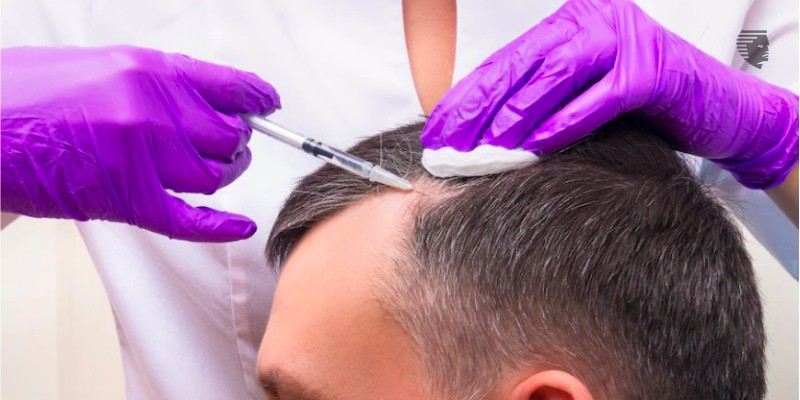
Hair Restoration Cost And Tips
Hair loss is a common occurrence for many individuals. It can stem from genetics, harsh hair treatments, and periods of excessive stress or trauma. Regardless of its underlying cause, hair loss can take a toll on a person’s self-esteem. But beyond the embarrassment caused by a receding hairline, going bald is also associated with other challenges. One of the most notable is the cost associated with hair restoration treatment.
Fortunately, there are ways to save money on your quest to restore your thick, healthy locks. Whether you’re on a strict budget or you just like to make the most of your hard-earned money, follow these three tips. They’ll help you navigate the range of costs common with hair restoration treatments.
1. Explore Available Treatment Options
There are multiple types of hair restoration procedures you can choose from. Before you can narrow down the cost of hair transplant treatments, you need to explore available options. Usually, the more painstaking and precise the technique is, the more costly it tends to be. Here are a few hair restoration options available to you.
Follicular Unit Extraction
Follicular Unit Extraction (FUE) is one of the most popular hair transplant procedures. Many people prefer FUE over other procedures because it delivers very natural-looking results and doesn’t leave ugly scarring behind. During FUE, your doctor removes individual hair follicles from the back of your scalp and transplants them into balding areas. You won’t need stitches and your recovery process will be quick and minimally painful.
The cost of FUE can vary significantly. A single treatment could cost anywhere from $4,000 to $15,000. The ultimate price tag depends on how experienced and in demand your surgeon is and the size of the treated area. The geographic location of your provider can also impact the cost. Most health insurance policies don’t cover cosmetic procedures, which means you’ll probably have to pay for your hair transplant out of pocket.
Follicular Unit Transplantation
Like FUE, Follicular Unit Transplantation (FUT) takes hair follicles from one area of the head and transplants them to another. But this technique involves surgical removal and transplantation of a strip of tissue from the donor site to the new site. This process leaves a visible scar behind and can lead to a rough and lengthy recovery time. FUT is more invasive than FUE but tends to be less expensive.
The average cost of FUT ranges between $4,000 and $10,00 per session. As with FUE, the total cost depends on the surgeon, the number of hair follicles being transplanted, and geographic location. Though health insurance policies rarely cover such procedures, some clinics offer payment plans to help patients.
Stem Cell Hair Transplants
Stem cells are undifferentiated cells from which all other specialized cells in the body are made. Because stem cells don’t yet have a specific role in the body, they can be made to perform almost any role that’s required. Research shows that stem cells have remarkable potential to repair damaged tissue and treat various diseases. A stem cell hair transplant is similar to other types of hair transplants. But instead of moving hair follicles from one area to another, doctors harvest and implant skin samples into balding areas to stimulate hair growth.
Stem cell therapies for hair loss are still in their early stages and require additional research to understand their efficacy and mechanisms of action. Therefore, any stem cell hair transplants offered by clinics are still in the investigational stages. The average cost for a stem cell transplant can range from $3,000 to $12,000, depending on the extent of hair loss and the doctor.
2. Compare Prices From Multiple Providers
You probably spend days, weeks, or even months comparing prices when shopping for a house or a car. Anytime you make a large purchase, it’s wise to do your research and make sure you’re getting a good deal. The same is true for hair restoration procedures. Prices can vary significantly from one provider to another, so make sure you get quotes from multiple providers.
Keep in mind that you often get what you pay for, so it may not be wise to always go with the cheapest provider. You should also consider provider experience and patient satisfaction when choosing who you’ll trust with your hair restoration needs.
3. Understand What Factors Can Influence Cost
The cost of hair restoration can vary substantially. If you’re working with a budget, it’s important to understand what factors can influence the final cost of your bill. The size of the treatment area is one of the biggest factors. The degree of hair loss can also impact the total cost of hair restoration. The more advanced the hair loss, the more expensive treatment is likely to be.
Highly complex and labor-intensive procedures such as FUE are known to cost more than simpler methods. You’re also likely to pay more for a highly experienced and in-demand provider than an inexperienced provider. Finally, you may pay more or less for the same procedure based on the geographic location of your provider. In some cases, it may be worth it to travel to another city or state to get a lower treatment price.
Most hair restoration procedures have a reputation for being expensive. To navigate the wide range of costs, explore available treatment options, compare prices, and understand what factors can influence your total bill.





More Stories
Is Vaseline an Indian Company? True or Not
Hrms Login Medicover – Tips and General Step to login
wheonx health: Latest Health News Portal